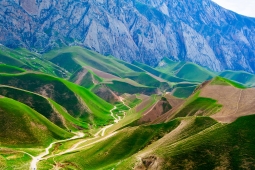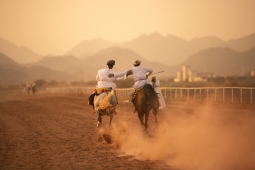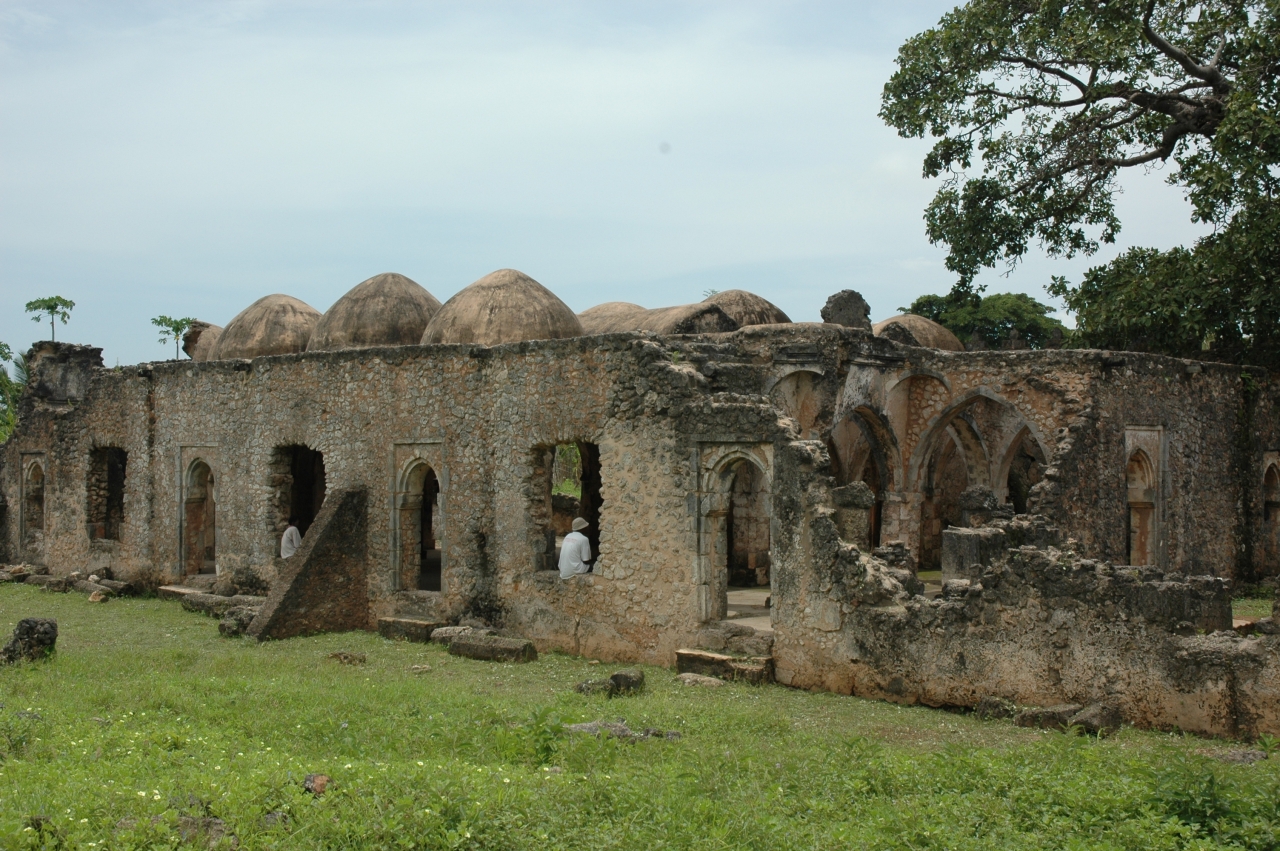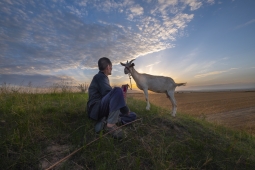Did You Know? Kilwa Kisiwani an East African Trading Port on the Maritime Silk Roads
© UNESCO/ Ron Van OersThe maritime routes of the Silk Roads can be traced back thousands of years, to links between the Arabian Peninsula, Mesopotamia, and the Indus Valley Civilization. During the early Middle Ages this network expanded as sailors and merchants from the Arabian Peninsula established trading routes across the Arabian Sea and into the Indian Ocean with linking parts of the Arabian Peninsula to China as early as the 8th century CE. Technological advances in navigation, astronomy, and ship building, combined to make long-distance sea travel increasingly practical for mercantile activity. As such lively coastal cities grew up around the frequently visited ports along these routes, including Zanzibar, Alexandria, Muscat, and Goa. These became wealthy centres for the exchange of goods, ideas, languages, and beliefs, with large markets and continually changing populations of merchants and sailors.
The East African trading port of Kilwa Kisiwani was another of such coastal cities which emerged and thrived due to its connection to the maritime trade routes. The city, located off the coast of what is today south-eastern Tanzania, was a bustling island trading port, part of the Kilwa Kisiwani Archipelago (a chain of islands) which lies off the south-eastern coast Tanzania and north of Madagascar, and now recognised as a UNESCO World Heritage Site. One of the most important of the 35 or so medieval trading ports in East Africa, Kilwa Kisiwani was inhabited from early as the 7th or 8th century CE and rose to prominence during the 13th century CE. From the mid-8th century CE, Muslim traders from the Arabian Peninsula and Egypt began to permanently settle in towns and trading centres along this section of the East African coast. Commercial exchanges precipitated wider interactions as newly arriving merchant communities mixed with local ones leading to a blending of languages and cultural practices and adding to a unique Swahili culture.
The earliest stone structures at Kilwa Kisiwani were built around 1000 CE and soon the settlement covered 1 square kilometre. The first substantial building at the trade port was the Great Mosque constructed in the 11th century CE using local coral and decorated with embedded Chinese porcelain, it was later significantly expanded. At the site there are also the remains of an unfinished royal palace dating from around 1300 CE. Later additional monumental structure included the Palace of Husuni Kubwa in the 14th century. Additionally, merchants from the Persian Gulf arrived at Kilwa Kisiwani from the 12th century CE onwards, strengthening the influence of Islamic architecture in the region. The traveller and Scholar Ibn Battuta (1304 -1369 CE) visited Kilwa Kisiwani in 1331 and described it as one of the most beautiful cities in the world.
Natural resources such as ivory, timber, animal skins, incense, rock crystal, and ambergris were exported from Kilwa Kisiwani, as were metals like gold, copper and iron and luxury items including precious stones and crystals. From Kilwa Kisiwani these goods were transported onwards across the Indian Ocean and to various different locations along the Maritime Silk Roads. Imported wares from the Mediterranean have been found within the earliest archaeological levels of the site suggesting it might have been connected to international trade, albeit at very modest levels, as early as the 7th century CE. Later, during the 11th century CE as local residents began to engage in deep-sea fishing they widened their maritime connections along the coast of East Africa and further into the India Ocean, eventually establishing the marine infrastructure required for facilitating high volumes of trade ships. At its height, goods imported to Kilwa Kisiwani included jewellery and cloth from the Indian Subcontinent, carved tin glazed pottery from the Iranian Plateau, and porcelain, jewellery and glass beads from China, imported in such large quantities that more Chinese artefacts were uncovered from archaeological sites in the city than at any other Swahili trade settlement.
Furthermore, merchants from Kilwa Kisiwani may have travelled between Mapungubwe on the Limpopo River and Great Zimbabwe, where a copper coin of a Kilwa Kisiwani Sultan and ceramic sherds from China have been uncovered. The majority of the Chinese ceramics from Kilwa Kisiwani date from the 13th to the 15th centuries CE and are of a particularly high quality. For example, a fine Qingbai glazed bottle from the Yuan period (1271 - 1368 CE) was uncovered at Husuni Kubwa the great fort situated just outside of the port. A mosque at nearby Songo Mnara, another important trade centre in the coastal region, had a Longquan celadon bowl stored within it, an heirloom probably intended for display and transported via Kilwa Kisiwani. Indeed, wares such as this proved so popular that by the 15th century CE more Chinese pottery was imported into the bustling entrepot of Kilwa Kisiwani than from the Arabian Peninsula.
Kilwa Kisiwani’s distinctive architecture including maritime causeways, ports, and mosques, blended influences from the Arabian Peninsula, Indian Ocean and East African coastline with its distinctive ‘stonehouses’ unique to Swahili culture acting as warehouses, bustling meeting places were merchants gathered and exchanged, and as identifiable status symbols. The interactions of peoples from throughout the Indian Ocean helped establish an eclectic local cuisine, a language with diverse influences and a blending of traditional Islamic architecture with distinctive local stone buildings constructed with coral and other available materials. The city remained a thriving trading port until the end of the 14th century when the spread of the disease commonly referred to as the ‘Black Death’ placed substantial barriers to trade both over land and sea. However, Kilwa Kisiwani has provided rich archaeological evidence of the distinctive Swahili coastal culture and of the maritime interactions associated with trade that prospered along Eastern African coasts in the Indian Ocean from the medieval period onwards.
See Also

The City of Balkh: Ancient Capital of Bactria and Centre of Buddhism and Zoroastrianism along the Silk Roads
The city of Balkh, situated on the plain between the Hindu Kush Mountain range and the Amu Darya river (the ‘Oxus’ in antiquity), in the north of modern day Afghanistan, sat at a cross-roads along the Silk Roads, with several trade routes intersecting in and around the city.

Traditional Horseback Games and Equestrian Sports along the Silk Roads
Animals played an essential role in the exchange and interactions taking place along the Silk Roads. Whilst sheep and goats provided many people with the commodities of daily life, camels and horses were crucial to travel, exploration, and the development of mercantile relations between peoples.








